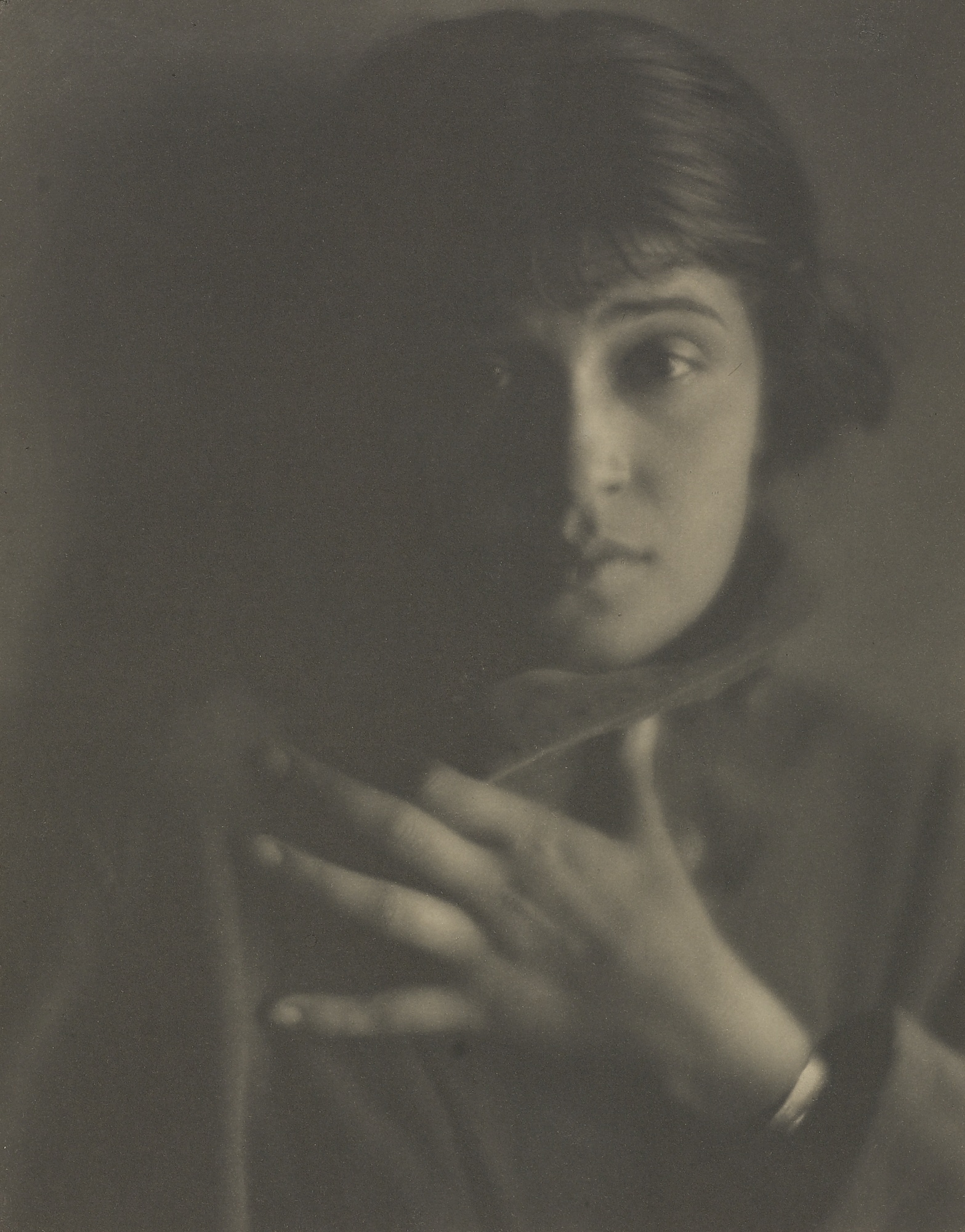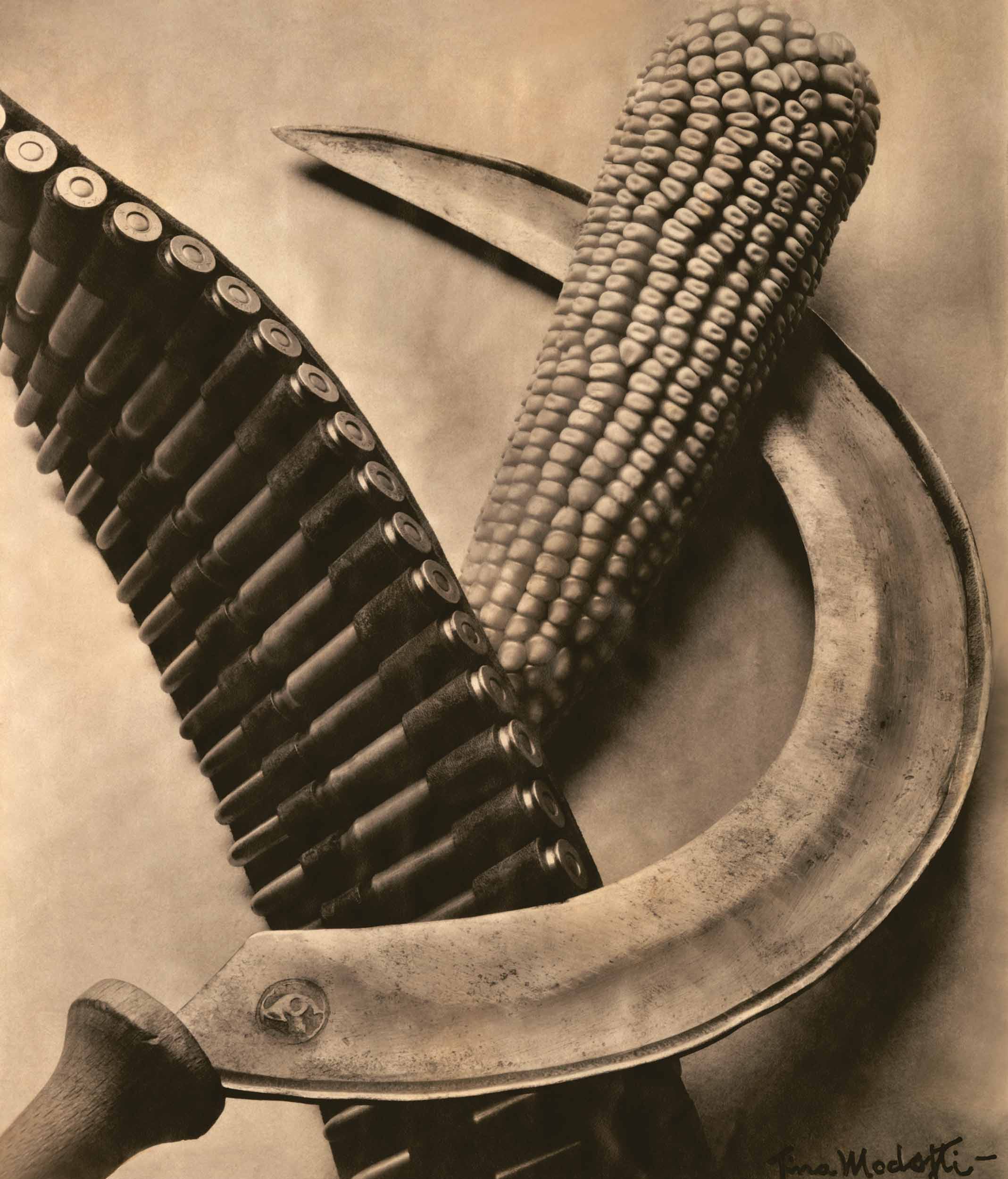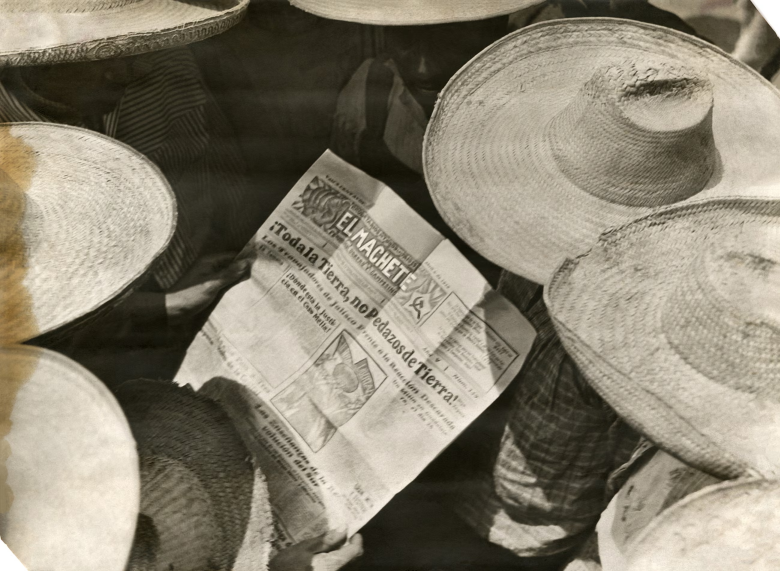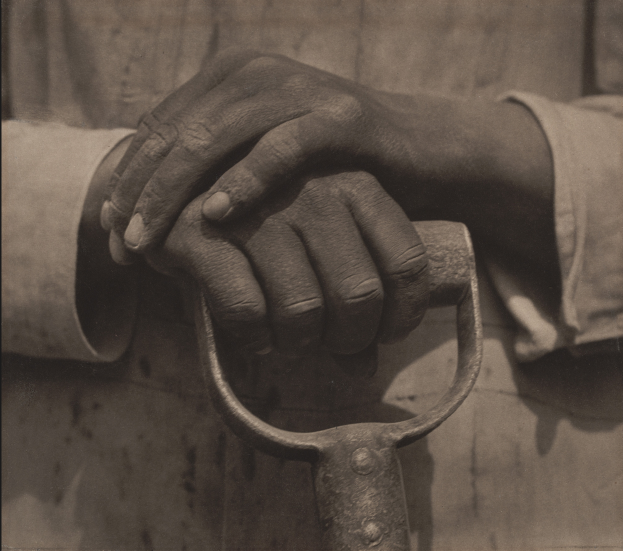Tina Modotti, Revisited: Why Are We Still Afraid to See Her As the Revolutionary That She Was?
 Tina Modotti’s short life took her from Italy to North Beach and from there to Mexico, Berlin, Moscow, and civil-war Spain. Rightly known as a pathbreaking modernist photographer, she was also a radical activist. “Modotti spent the second part of her working life fighting for revolution.”
Tina Modotti’s short life took her from Italy to North Beach and from there to Mexico, Berlin, Moscow, and civil-war Spain. Rightly known as a pathbreaking modernist photographer, she was also a radical activist. “Modotti spent the second part of her working life fighting for revolution.”
It was Jeannette Ferrary, herself a fine photographer, who drew my attention to the belated obituary of Tina Modotti that appeared in the New York Times on September 9. This decidedly post-posthumous obit—published more than 80 years after Modotti’s death—is part of “Overlooked,” a series of portraits of remarkable people whose death the paper had initially ignored. Linden deserves credit for getting the Times to acknowledge this radical hero so long after her death, and she gives a solid account of the work Modotti did in the 1920s as a photographer in Mexico—where she is regarded as a founder of Mexican socially radical photojournalism and documentary work.
But there is more to Modotti’s life story. Born in 1896 in Udine, in northeastern Italy, in 1913 she emigrated with her working-class parents to San Francisco’s North Beach, where she began acting in local theater. In 1918, she moved to Hollywood, where she met Edward Weston. Linden pays a lot of attention to her relationship with Weston, who is considered a founder of modernism in photography. As Modotti was searching for her way as a photographer and woman, the two moved to Mexico together. Tina was 27.
By this time, Weston had begun to discard the soft-focused pictorialism favored by established photographers of the day. His modernist images of the Armco steel mill, taken in 1922, were not only historic in their simplicity and sharp focus, but also expressed the era’s progressive ideas about the importance of industry—and by implication, industrial workers. Weston was not alone: Paul Strand made a similar turn in that period. Later, in the 1930s, many photographers would use factories in a similar way, but Weston and Strand were ahead of their time. In those years, heavy industry represented the future.
Weston, together with Modotti, developed this vision further in Mexico. (John Mraz, a respected historian of photography, has argued that the Mexican contribution to the development of photography is generally unacknowledged in the United States.) It is no coincidence that Weston created some of his most iconic images there: The country affected him deeply. But so did his relationship with Modotti.
In fact, if until then Modotti and Weston had been student and teacher, in Mexico they became collaborators. Modotti, who joined the Mexican Communist Party in 1926, increasingly began charting her own course, combining the modernist ideas of directness, sharp focus, and simplicity with radical politics. This gave her work tremendous impact—including in the United States, where her famous image of a hammer and sickle was put on the cover of The Masses when that monthly magazine was at the height of its popularity.
This photograph was one of a series that opened with a straight depiction of the Communist symbol and then gradually transposed the elements. First, Modotti added a sombrero; eventually, she took out the symbols from the Russian revolution altogether and substituted them with a bandolier, a guitar, and an ear of corn—in effect “Mexicanizing” communism through symbols from the country’s own revolutionary history. Ironically, the Times obit only reproduces the last image in the series, wholly obscuring its revolutionary intent.
This erasure of Modotti’s radicalism is symptomatic. While Linden exaggerates Modotti’s subservience to Weston, she also underplays her politics. It’s true that, when they first met, Modotti asked Weston to be her teacher, and she later acknowledged that she learned her technical skills from him. Yet unlike Weston, Modotti mobilized the modernist aesthetic for a political cause. To be sure, the obit discusses her famous image of a Mexican labor march, in which the mass of sombreros, hiding the workers’ faces, convey a message of political power and militancy. The piece also includes another famous worker photograph, showing worn hands resting on the handle of a shovel. But Modotti didn’t stop there. She also shot luminous portraits of women from indigenous communities, including a well-known image of a woman holding a baby, in which the light gives their skin and muscles almost three dimensions. Among her other overtly political images is a photograph of a group of workers reading a copy of El Machete, the Communist Party newspaper. The message of the photograph is clear—the paper and its Party are speaking to the working class. As they participate in politics, ordinary people become literate.
It’s no coincidence that Modotti has emerged as an important figure in feminist and women’s studies, given her genius as an artist, her independence, and her unwillingness to subordinate herself to men—including Weston. As the obit describes the couple’s life among artists and muralists in Mexico City’s bohemian atmosphere of the late 1920s, just after the Mexican Revolution, Linden mentions that Modotti posed nude in several Weston photographs. These images—among the most famous nudes in the history of photography—are charged with the photographer’s sexual desire. Yet looking at them from Modotti’s perspective, they seem matter-of-fact. She doesn’t face the camera. There’s no come-on. Her attitude seems rather casual, as if she’s saying: “This is my body, this is who I am.” Photography historian Sally Stein notes that Modotti stopped posing for Weston soon after these images were shot. “We’re left to wonder,” she adds, “whether [Modotti] had growing reservations about photography’s potential with regard to women.”
Linden’s focus on Mexico and photography mirrors that of most books about Modotti, including the excellent Tinissima by the great Mexican writer Elena Poniatowska. Authors generally have a much harder time with Modotti’s life after her 1930 deportation, along with Vittorio Vidali, by the incoming rightwing government. Vidali, who was the representative in Mexico for the Communist International, eventually became Modotti’s lover; their relationship lasted to the end of her life.
Linden misleadingly presents the years after Mexico as a series of spontaneous travels. The truth is that Modotti first spent six months in Berlin, where she began working for the Anti-Imperialist League, whose Mexican chapter she had helped organize, while trying to adapt to the new genre of street photography. (Her deliberate process and old camera were too slow, however, while her poverty kept the new 35mm Leica out of her reach.) With Vidali, she then traveled on to Moscow, where she became an organizer for the Comintern. For several years, she worked for International Red Aid (the MOPR), smuggling money and support to imprisoned revolutionaries and banned political parties. In 1934, after Hitler took power, she and Vidali went back to Berlin to organize support for Georgi Dimitrov, who was on trial for the Reichstag fire—the event that Hitler used to suspend all civil liberties in Germany.
In these years, Modotti’s photographs from Mexico were widely published by Willi Münzenberg’s Arbeiter Illustrierte Zeitung (AIZ), the Workers’ Pictorial Newspaper. Although she gradually stopped taking pictures herself, she continued to contribute to the ideas of socially-committed photography. In 1932, she wrote “Photos als Waffe der RH-Agitation” (Photographs as Weapons of Red-Aid Agitation), arguing, as Brigette Studer explains, that while photography makes possible the “objective” reproduction of the hard reality of capitalism, images should not just illustrate text but should speak for themselves.
When Modotti first went to Spain in 1933, she was promptly deported. In 1934, when she tried to return to bring support to the miners’ uprising in Asturias, she was stopped at the border. Then, in 1936, with the election victory of the Popular Front, she went back once again. This time, she managed to stay until the Republic’s final retreat in 1939. During the Civil War, she was the head of Socorro Rojo (Red Aid), organizing support for the soldiers and civilian population and later for the refugees as they fled from Franco. Vidali, aka Carlos Contreras, was one of the organizers and a political commissar of the Fifth Regiment. During the war, the membership of Red Aid in France grew to 150,000, and in Spain to 500,000. Modotti moved from city to city, even by boat from Barcelona to Valencia, under the guns of the fascist-occupied coast. She was close to poet Antonio Machado, who called her “the angel of my house.”
As Franco’s armies advanced, and the International Brigades left, Modotti “felt anguish in my heart,” she later recalled, “and I thought about how this was the end.” Vidali said he thought the war still might be won. “You were always an optimist,” Modotti responded. In the weeks that followed, she helped half a million people make their escape from Barcelona to the French frontier, under bombs and strafing planes. Her friend Antonio Machado died of pneumonia after crossing the Pyrenees. Her comrade at Red Aid, Mathilde Landa, stayed on but was captured. Landa committed suicide after being tortured by the fascists.
On February 9, 1939, Modotti, carrying none of her possessions, crossed the French border. Vidali followed shortly after. In France, the Mexican ambassador Narciso Bassols, a Communist, got Mexican residence visas for Modotti and Vidali and hundreds of other political refugees, including transit visas for the U.S. When the Queen Mary docked in New York, however, immigration authorities wouldn’t let Modotti off the boat. Her sister, Yolanda Magrini, a Communist artist, tried to see her but was not allowed to board the ship. Modotti, who’d last seen the U.S. in 1923, was never able to return to American soil. Linden describes the successful efforts of Modotti’s friends to find her refuge in Mexico, although she once again brushes over the political context.
Meanwhile, the decision by Mexican President Lázaro Cárdenas to give asylum to more than twenty thousand Spanish refugees had a great impact on Mexican photography. Among the refugees were the Mayo brothers, Communists who founded a radical photo agency that created a new, radical direction for photojournalism. The Mayos mentored a whole generation of red photographers that followed, from Rodrigo Moya to Marco Antonio Cruz.
That tradition had its influence north of the border as well. Mariana Yampolsky, a niece of Franz Boas, was born, raised, and educated in Chicago, and emigrated to Mexico. Already a socialist, she went to work in the Taller de Grafica Popular, bringing her into the Mexican left and close to the Mexican Communist Party. During the hysteria of McCarthyism, Yampolsky, like Modotti, was denied the right to return to the U.S. A brilliant photographer, very much in the Mexican tradition, she spent many years producing photographs for books for the Mexican Education Ministry, when schools still taught socialism as a national goal. Yampolsky was influenced by Modotti’s work and was a student of both Lola Álvarez Bravo and her husband, Manuel.
Modotti herself never returned to photography. Instead, she worked full time for revolution, motivated, as she wrote, by “the intolerable exploitation of the workers of the countries of South America and the Caribbean” and the “bloody revenge on peasants who fight for their land, the torture of imprisoned revolutionaries, [and] armed attacks on street rallies and unemployed marches.” She died in 1942, in the middle of the war against Nazism, most likely from a combination of exhaustion and heart failure. Afterwards, Vidali returned to Italy, where for many years he was a Communist senator for Trieste.
A dedicated Communist Party member, Modotti spent the second part of her working life fighting for revolution. Glossing over this part of her life, as the Times obit does, fails to do justice both to the political sophistication of her ideas and to her commitment to photography. Her attempt to balance those commitments contradicts the bourgeois idea that artists must sacrifice everything for their art. The tension between politics and art was experienced by other red women photographers in the U.S. as well, from Consuelo Kanaga to Marion Post Wolcott. Their history and contributions are still little known today because of the Cold War. Modotti believed that working toward communism and fighting fascism were more important than her photography. This was a revolutionary position.
All of this, I think, makes it unlikely that Modotti will ever be as idolized, at least in mainstream media, as Frida Kahlo—another Communist. Still, more can be done to acknowledge her extraordinary life and work, especially in the Bay Area, where I live. To be sure, San Francisco’s Italian community was deeply split by Mussolini and the rise of fascism. But left-wing Italians here should claim her as their own, as should artists and photographers. We really need a Tina Modotti center, as they have in Udine, where she was born, to help popularize her ideas about photography and politics. They are as relevant today as they were when she was alive.
David Bacon is a California-based writer and photographer. He was a factory worker and union organizer for two decades with the United Farm Workers, the United Electrical Workers, and other unions, and has been documenting the lives of farm workers through photographs and journalism since 1988. A previous version of the article was published by the Rosa Luxemburg Stiftung.















